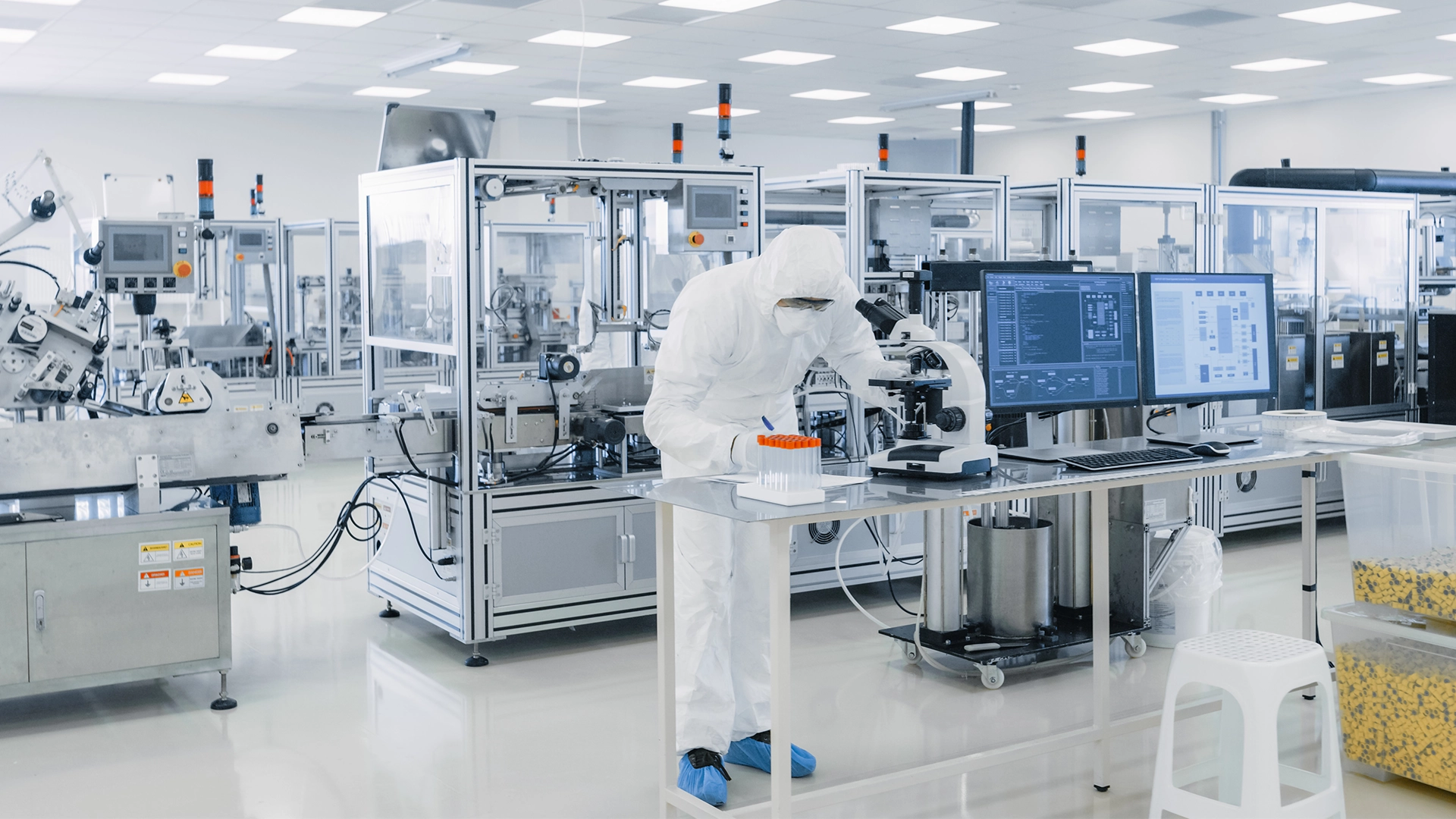PM Group call these, the “Six A’s” - Adaptability, Assembly, Adjacencies, Automation, Aesthetics and Accountability.
"Take each of these areas into account," says Kieron, "and you will design an excellent lab. How do you prioritise? That comes down to the specific functional requirements and budget, but from a design perspective, there is one standout - adaptability."
Most process simulations perform tasks like clash resolution in production scheduling or equipment sizing. These simulations do not, in general, provide design intelligence - they merely show if and how a particular design would work.
"Adaptability is key to modern lab design. Buildings that we design today have a life-span of 50 years."
Adaptability - the need for flexibility
“Adaptability or flexibility is key to modern lab design. Buildings that we design today have a life-span of 50 years. More and more, we are retrofitting existing buildings and laboratories for new uses, sciences and technologies. Long-term adaptability has to be considered from the beginning.”
Aesthetics - changing design
Laboratory design is changing rapidly. For years, labs were hidden away, undervalued and unseen. They now play a critical role in terms of quality, manufacturing and development and are important drivers of research. To attract and retain the best staff labs must be high design quality, collaborative environments.


“Our new laboratories have an open aesthetic and are part of the 'Science on View' strategy. It’s about environments that facilitate mixing and interaction and help to inspire new ideas.”
Kieron McGrath
Principal Architect and Lab SME
Automation - increasing interaction
Obviously, adaptability goes hand-in-hand with the other big A in the list — automation. The increasing prevalence of robots in labs might trigger concerns that humans are being replaced. While there are moves towards a ‘lights-out’, fully automated laboratory, robots are not replacing people.
Industry is trying to use robots to focus on the mundane tasks. This allows the highly trained scientists to concentrate on higher value work and the increased capacity demands from new sciences.
Assembly - modular design
Mixing robots and humans sounds tricky - you might assume it is hard to design a lab for both. But it is not as difficult as you might think if you use a modular design solution from the start.
"Particularly around benching and services. We use a 3.6-metre (12ft) square module as the basis of our modular designs. It used to be that power and utility trunking were fixed as part of the bench making it difficult to reconfigure spaces. Previously people thought of ‘flexibility’ as additional space and more power outlets.
Now, we are using 1.8-metre (6ft) bench units on wheels, with cupboards that can be moved in and out as needed. Service systems — power and air — are suspended from the ceiling and disconnected from the benchtop. You’ve got a much better setup for ‘plug-and-play’ and changing things later.”
That goes equally for the future need to integrate robotics. Kieron says that a modular design and a little bit of budget spent now on adaptability for automation goes a long way in the future. Future labs are designed as a kit of parts built around a modular unit. There is also a growing trend for prefabricated modular lab units, something we are currently considering the implications of in our 'Lab of the Future' concept design.


"To reduce carbon footprint, you might want to build upwards to increase your density. However, to create an easier flow from one department to another, you need to build outward."
Kieron McGrath
Principal Architect and Lab SME
Adjacencies
Adjacencies deals with the fascinating aspect of what kind of arrangement is needed. Do you build up or build out? Clearly, geography has its part to play. In crowded city environments in countries like Singapore, it is better to build up. “There are multiple facets to the way we think about these issues,” says Kieron. "We run a workshop process with clients early on to tease out their requirements and needs.”
Accountability - sustainability
The world is changing and we all have a responsibility to live our lives in a more sustainable way. Labs are no exception. Sustainable lab design balances – energy, operation, water, resources, location and waste. The most influential is energy and minimising energy use in the lab is critical. Kieron advised “It is through
accountability that the symbiotic nature of the Six A’s stands out the most”. Automation and data deliver a better understanding of the lab's operation and provide the information to minimise wasted equipment, time and energy use. Flexible, modular designs are easier to change with less requirement for natural resources.
The future?
The emerging trends in lab design are likely to respond to flexible work patterns and the laboratory requirements of cell and gene therapy (CGT).
“We're looking at how people can be disconnected from the laboratory and work remotely. We are also beginning to see a need for satellite laboratories close to hospitals. If you are working with sample cells from a patient, you need to get that sample to a laboratory as quick as possible. So we’re designing buildings to have drone access for rapid transport - it's all part of a changing world.”
"In a changing world, there is no one solution for lab design in the future. Finding the right mix of the Six A’s is the basis of our design process with our clients.
The right mix now is not necessarily the right mix in the future, which brings us back to the baseline of those Six A’s - adaptability. That’s top of my list when I start designing,” concludes Kieron.








